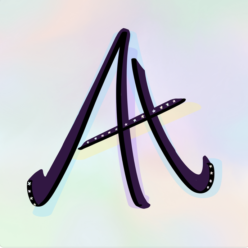
The readings that were assigned to us for this internship class have definitely opened my eyes in the understanding of ethical perspectives, concepts, self-awareness and other issues. All of these aspects allow me, as a designer, to apply the values of ethics not only in the workplace but in the brand that I extend and build for myself. In all of these years of academic education, I have learned the principles of the importance of copyright from the early years, taking creative classes in high school. When giving presentations for class projects, it was always important to have references to the imagery that was used from online sources, even down to the elements or presentation templates. I was able to apply this knowledge to all of my college courses as well, and reading up on the detailed logistics and reflections of ethics in graphic design expanded on these understandings.
In terms of giving artistic credit, it is important to acknowledge laws such as the 1976 Copyright Act, explained by AIGA’s “Use of Illustration” (p50) reading that highlights use of art by illustrators. As supported by the reading, original artwork always belongs to the creator/illustrator from the moment it is created. Even if buyers purchase an artwork for use, the creator of the artwork remains as the owner, and any changes made to it must be done by themselves with permission. This same rule applies to photography, as highlighted by Sara Hawkin’s article “Copyright Fair Use and How it Works for Online Images”. It is important for designers and other creatives to understand the meaning of terms such as “fair use”, and “Digital Millennium Copyright Act”, which are some of the many aspects of understanding the use of work and copyright rulings.
An online childhood game that I loved, Club Penguin, was owned and shut down by Disney in 2017. During this time, dozens of “private servers” were created by individuals to completely replicate the game and “revive” it for the millions of users who played the original. One of them was recently shut down due to this being copyright infringement, even though the original game shut down years ago, Disney is still actively pursuing cases of those trying to revive the game. You can read more about it here on Wikipedia, “Club Penguin Rewritten”.
References:
“Use of Illustration”, AIGA, (2009), New York City; Brad Holland et al.
“Copyright Fair Use and How it Works for Online Images : Social Media Examiner” Social Media Examiner, (2019), Sara Hawkins.



